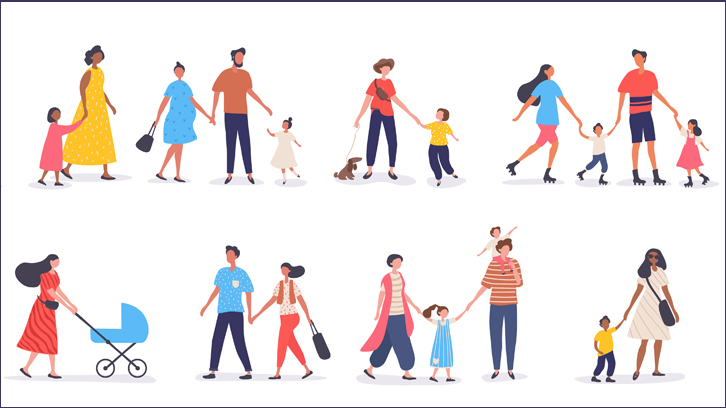Inequality of reconstituted households: effects on childhood

The rising of divorce and remarriage rates mean that reconstituted households, formed by a couple and at least one non-common child, are becoming increasingly frequent. In this study, data on income and living conditions from 22 countries have been analysed. The results show that minors from reconstituted households are more likely to not have basic needs covered, not because they are not a priority, but because they are impoverished households. Thus, with the increase in reconstituted households, the risk of child poverty increases.
Raising divorce and remarriage rates mean that reconstituted households, formed by a couple and at least one non-common child, are becoming increasingly common. Children in reconstituted households tend to have poorer academic outcomes and experience lower well-being, compared to children in two-parent households. There is also some evidence that non-common children receive less economic support from their parents upon leaving the parental home. These differences may reflect limited resources, preferences or different sharing strategies in reconstituted households. For instance, non-parent adults may be less willing to prioritize the needs of children to whom they are not directly related by blood.
In this paper we examine the potential implications the increased prevalence of repartnering for child poverty. We consider the following questions: Do households always put children’s needs first? In which ways are reconstituted and intact households similar or different? We analyse data from the European Survey on Income and Living Conditions for 22 European countries provided by Eurostat. To explore differences between reconstituted and intact households with children we classify European countries in three groups that share historical and economic characteristics: Western Europe, Eastern Europe and Southern Europe.
In line with previous research, we find that across Europe, households do tend to prioritize children’s needs. Differences between adults are generally small, although they do show women tend to be at a disadvantage. Children in reconstituted couple households are more likely to be deprived than children in intact households. The differences are particularly stark in Eastern Europe where one in two children in reconstituted households are deprived, compared to one in four of those in intact households.
Finally, we examine the reasons for this higher risk. We find reconstituted households to be poorer but, in contrast to previous literature, we find no evidence that reconstituted households are less likely to prioritize children. Thus, the high deprivation among children in reconstituted households reflects the higher incidence of poverty among those households, rather than differences in resource allocation.
Our findings have two key policy implications. First, the fact that households prioritize children when making spending decisions provides additional support for transfers such as child benefits, as an effective child poverty reduction strategy. Second, reconstituted households are on average poorer. Thus, the increase in the proportion of children growing up in reconstituted households may result in an increase in child poverty.
This study has been funded by the Beatriu de Pinós program of the Secretary of Universities and Research of the Department of Business and Knowledge, Generalitat de Catalunya, and Marie Sklodowska-Curie COFUND (contract number 801370) H2020.
References
Lanau, A. (2021). Children First? Intra-Household Inequality in Reconstituted Couple Households. Journal of Family Issues. https://doi.org/10.1177/0192513X211055112


